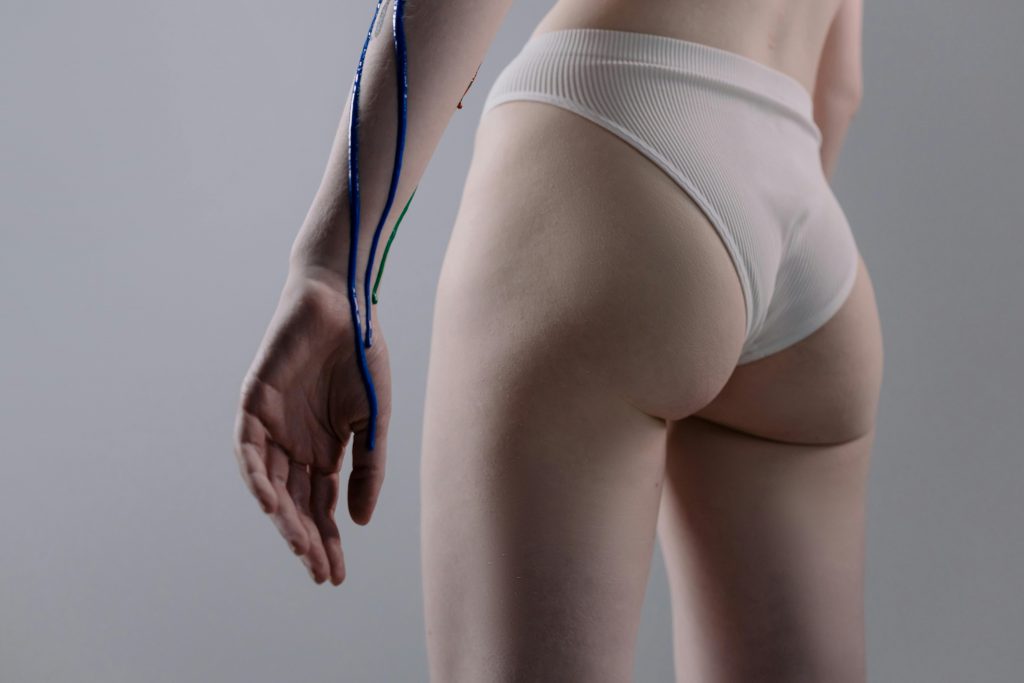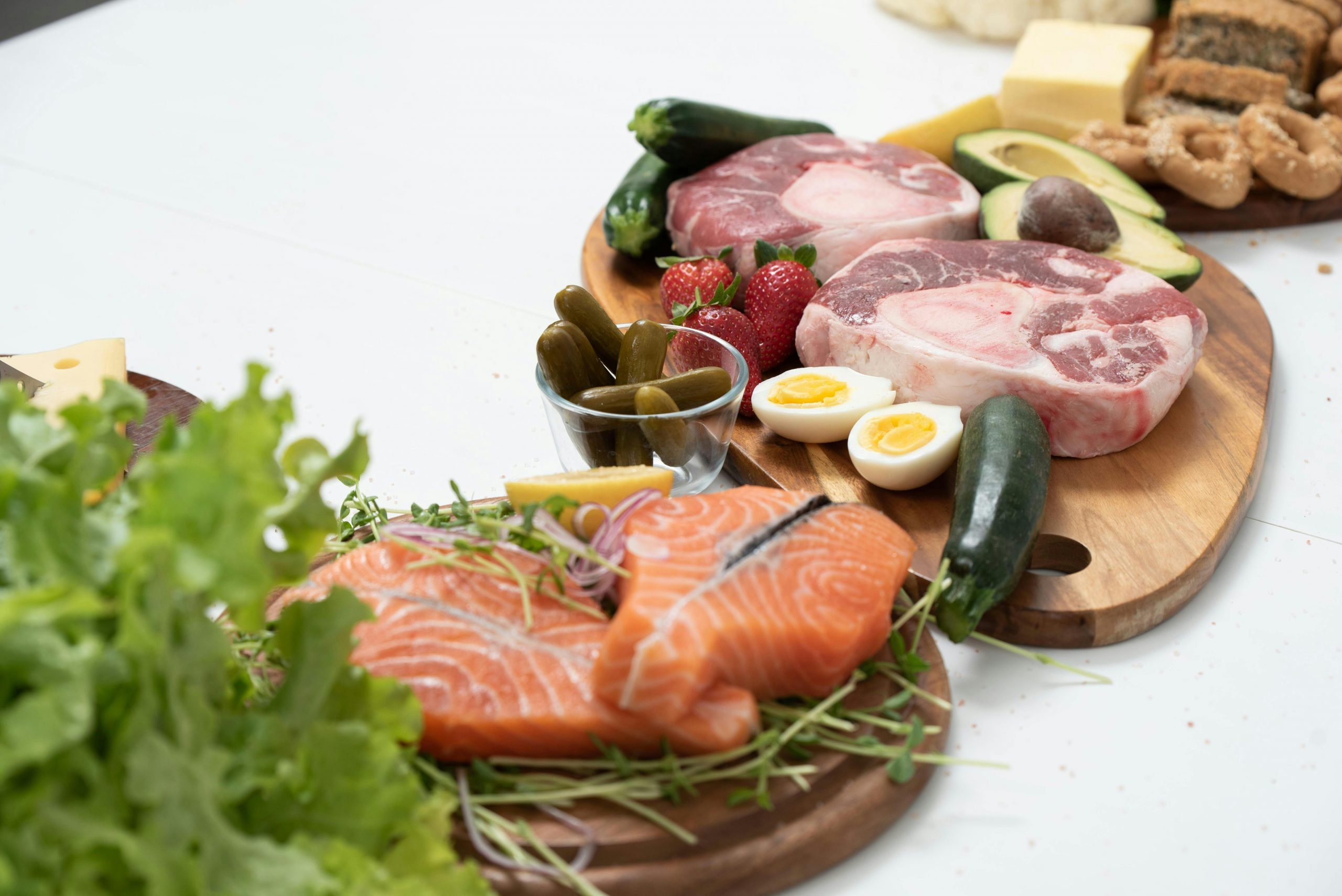
If you’ve been wondering how to grow your glutes and what foods can help you achieve a bigger, firmer butt, you’re in the right place. Nutrition is a crucial part of muscle growth, and the right foods provide your body with the essential nutrients to support the building and recovery of muscle. While exercise is important for targeting your glutes, what you eat can significantly enhance the process, giving you the fuel you need for effective workouts and muscle repair afterward.
In this article, we’ll break down the best foods to eat for glute growth and explain how they support your body’s ability to build muscle. From protein-packed options to healthy fats and carbs that provide energy, we’ll show you how to combine a balanced diet with the right exercises to achieve maximum glute growth. Whether you’re looking to enhance your curves or simply strengthen and tone your glutes, nutrition plays an essential role in reaching your fitness goals.
Why Nutrition Matters for Glute Growth

Before we dive into the specific foods that can help with glute growth, it’s essential to understand why nutrition plays such a critical role. When you perform exercises that target your glutes—such as squats, lunges, and deadlifts—you’re essentially breaking down muscle fibers. While this might sound damaging, it’s actually a necessary part of the muscle-building process. The goal is for your body to repair and rebuild those broken fibers stronger than before, leading to muscle growth.
However, muscle recovery doesn’t happen on its own. For this process to be successful, your body needs the right nutrients to repair and strengthen the fibers. If your nutrition is lacking, your muscles won’t recover properly, which can lead to slower progress, plateauing, or even injury. Inadequate nutrients also make it harder for you to perform at your best during your workouts, which further hinders your growth potential. Proper nutrition provides the building blocks your body needs to make the most of each training session.
For optimal glute growth, your body needs a combination of essential nutrients, each contributing to different aspects of muscle repair and growth:
- Protein is the primary nutrient needed to repair and build muscle fibers. Without enough protein, the recovery process is hindered, and muscle growth is limited.
- Carbohydrates act as the primary fuel source for your workouts. They provide the energy your muscles need to perform at their best, especially during intense training sessions. Without adequate carbohydrates, you might feel sluggish or fatigued, which can prevent you from pushing yourself hard enough to stimulate muscle growth.
- Healthy fats support hormone production, including key hormones like testosterone and estrogen, which are involved in muscle repair and growth. Healthy fats also help with overall cell function and energy balance, which is vital for maintaining strength during your workouts.
- Vitamins and minerals help ensure your muscles and body can properly recover. For example, minerals like calcium and magnesium play roles in muscle contraction and relaxation, while vitamins like Vitamin D support bone and muscle health. Without these micronutrients, your body might struggle to perform even basic recovery functions.
Understanding how these nutrients contribute to your muscle-building process will help you see the importance of a balanced diet. By consistently fueling your body with the proper nutrients, you can maximize the benefits of your workouts and see faster, more noticeable growth in your glutes.
Now that we have a solid understanding of why nutrition is crucial for glute growth, let’s take a closer look at the specific foods that can help you achieve a bigger, firmer, and more toned butt.
1. Protein-Rich Foods
Protein is essential for glute growth because it provides the necessary building blocks for muscle repair and growth. After a workout, your glute muscles experience micro-tears, and consuming protein helps to repair and rebuild these muscle fibers. This process is critical for strengthening and enlarging the glutes over time. To see optimal results, it’s important to regularly include high-quality protein sources in your diet. Aim to consume protein throughout the day, especially post-workout, to support muscle recovery and growth.
Best Protein-Rich Foods for Glutes:
- Chicken breast: A lean, high-protein option that’s low in fat, making it perfect for muscle-building without excess calories. It’s versatile and can be cooked in many different ways.
- Turkey: Another lean protein similar to chicken, turkey provides essential amino acids to promote muscle growth while being low in fat.
- Salmon: Not only is salmon packed with protein, but it also provides healthy omega-3 fatty acids that help reduce inflammation and support muscle recovery. These fats are crucial for hormone production and overall health.
- Eggs: A staple protein source that’s easy to prepare. Eggs provide a complete set of amino acids, and the yolks are rich in healthy fats, vitamins like Vitamin D, and other nutrients that support muscle function and growth.
- Greek yogurt: This creamy dairy product is an excellent source of protein, offering a higher protein content than regular yogurt. Greek yogurt also contains probiotics that aid digestion and help improve overall gut health.
- Tofu: For those following a plant-based diet, tofu is a great protein source. It’s a complete protein, containing all nine essential amino acids necessary for muscle growth.
- Lentils and chickpeas: These legumes are not only rich in protein but also high in fiber, making them great for digestion and satiety. They’re perfect for adding plant-based protein to your meals and are versatile in various recipes.
Incorporating these protein-rich foods into your diet will help ensure that your muscles receive the essential amino acids they need to recover and grow after each workout. Regularly consuming protein throughout the day—especially post-workout—ensures your body has the nutrients required to maximize muscle growth and glute development.
2. Healthy Fats

Healthy fats are crucial for hormone production, including the hormones responsible for muscle growth. In particular, healthy fats support the production of testosterone and other growth hormones that play a role in building muscle. Including healthy fats in your diet can help you recover better from workouts and ensure your body is primed for glute growth.
Best Healthy Fats for Glute Growth:
- Avocados: Packed with heart-healthy fats, avocados help support hormone production and provide a great source of fiber.
- Olive oil: Rich in monounsaturated fats, olive oil is great for cooking or drizzling over salads and vegetables.
- Nuts and seeds: Almonds, walnuts, chia seeds, and flaxseeds are all high in healthy fats and provide a nice protein boost as well.
- Coconut oil: Containing medium-chain triglycerides (MCTs), coconut oil is a healthy fat source that supports energy and muscle recovery.
- Nut butter: Peanut butter, almond butter, or cashew butter are tasty, high-fat options that can help you meet your daily fat needs while supporting muscle growth.
Make sure to incorporate healthy fats into your meals to support muscle-building hormones and improve overall recovery.
3. Carbohydrates for Energy
Carbohydrates are your body’s main energy source, and they’re especially important when you’re working out. When you lift weights or perform intense exercises like squats and lunges to target your glutes, your body needs energy. Carbs are broken down into glucose, which fuels your muscles during these high-intensity activities. Without enough carbohydrates, you may feel fatigued during your workouts, which can hinder your glute-building progress.
Best Carbohydrate-Rich Foods for Glutes:
- Sweet potatoes: A nutrient-dense carb that’s high in fiber, vitamins, and minerals.
- Brown rice: A whole grain that’s packed with fiber and provides long-lasting energy.
- Oats: A great source of complex carbs, oats provide steady energy and are high in fiber.
- Quinoa: A complete protein and carb source, quinoa offers all nine essential amino acids and is a great option for muscle-building.
- Whole wheat bread: Opt for whole wheat instead of white bread for a healthier, fiber-rich carbohydrate source.
- Fruits: Bananas, apples, berries, and mangoes are all rich in vitamins, antioxidants, and fiber while providing natural sugars that fuel your workouts.
By consuming healthy carbohydrates, you’ll have the energy needed to perform glute-building exercises and recover properly afterward.
4. Vitamins and Minerals for Muscle Growth
In addition to protein, fats, and carbohydrates, certain vitamins and minerals can play a significant role in muscle growth and recovery. For example, Vitamin D helps with muscle function, calcium supports muscle contraction, and magnesium promotes relaxation and recovery. Ensuring you get enough of these essential nutrients can make a big difference in how quickly your glutes grow.
Key Vitamins and Minerals for Glutes:
- Vitamin D: Found in foods like salmon, eggs, and fortified milk, Vitamin D supports muscle function and bone health.
- Calcium: Important for muscle contractions, calcium is found in dairy products, leafy greens, and fortified plant-based milks.
- Magnesium: This mineral helps with muscle relaxation and recovery. You can find magnesium in nuts, seeds, spinach, and beans.
- Zinc: Zinc is essential for immune health and protein synthesis. Good sources of zinc include red meat, pumpkin seeds, and beans.
Incorporating a variety of nutrient-dense foods will help ensure you’re getting the vitamins and minerals your body needs to maximize glute growth.
5. Hydration: Drink Enough Water
While food is vital for building a bigger, firmer butt, hydration is just as crucial in the process. Water supports several important functions in your body that contribute to muscle growth and recovery. For one, water aids in digestion, helping your body absorb the nutrients from food more efficiently. Proper hydration also facilitates nutrient transport, meaning the vitamins, minerals, and proteins you consume can reach your muscles faster to aid in the recovery process.
When it comes to muscle repair, hydration is essential. Dehydration can slow down the healing and rebuilding process of muscle fibers after an intense workout, which can lead to slower progress or even stunted muscle growth. If you’re not drinking enough water, your muscles may not fully recover between workouts, which can negatively impact your ability to build strength and size in your glutes. Additionally, dehydration can increase fatigue, making it harder for you to push through tough workouts.
To support your muscle-building efforts and ensure your body is functioning at its best, it’s important to stay hydrated. Aim to drink plenty of water throughout the day, especially before, during, and after workouts. A general guideline is to drink at least 8 cups (64 ounces) of water per day, but active individuals who are working on building muscle might need more. If you’re exercising intensely or in hot conditions, be sure to replenish your fluids regularly. Hydrating with water is the most effective way to ensure that your muscles are receiving the nutrients they need to grow and recover efficiently, leading to better overall results.
Putting It All Together: A Sample Meal Plan for Glute Growth
To give you an idea of how to incorporate these foods into your diet, here’s a sample meal plan designed to support glute growth:
- Breakfast: Scrambled eggs with spinach, avocado, and a side of whole-grain toast.
Snack: A handful of almonds and a banana. - Lunch: Grilled chicken breast with quinoa and roasted sweet potatoes.
- Snack: Greek yogurt with chia seeds and mixed berries.
Dinner: Baked salmon with brown rice and steamed broccoli.
Post-Workout: A protein smoothie with protein powder, almond butter, spinach, and oats.
This meal plan provides a balance of protein, healthy fats, carbohydrates, and essential vitamins and minerals to fuel your workouts and support muscle recovery.
Conclusion
If you’ve been wondering what food makes your butt bigger, the answer is simple: a combination of protein-rich foods, healthy fats, complex carbohydrates, and essential vitamins and minerals. By incorporating these foods into your daily diet, you can support the muscle-building process and work toward achieving a bigger, firmer butt. Don’t forget that exercise also plays a crucial role, so pair your nutrition plan with the right glute-targeting exercises for the best results.
With consistency, patience, and the right combination of nutrition and exercise, you can achieve the glutes you’ve been dreaming of.



